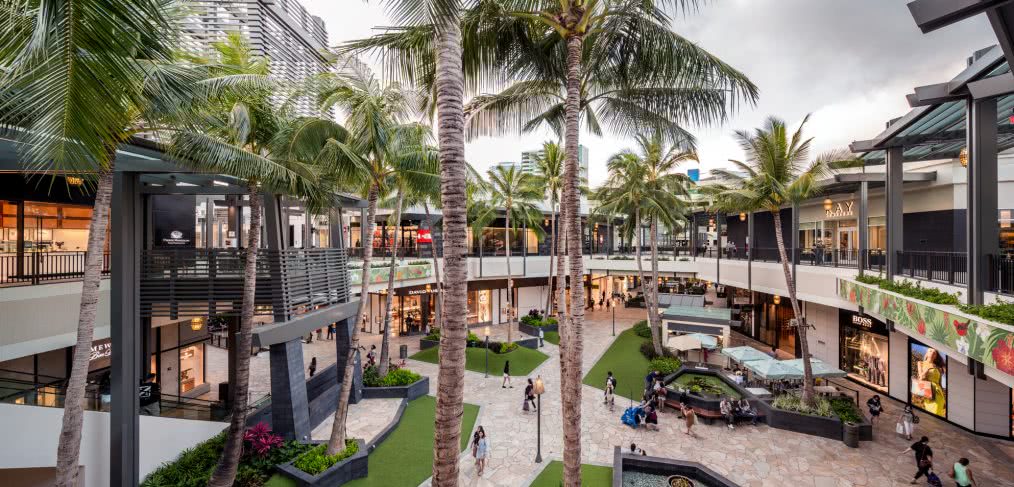
Local Luxury: The Best of Both Worlds at Ala Moana
The Ala Moana Center in Honolulu is the largest open-air shopping center in the world. A multi-million dollar art collection, indigenous landscaping, more than 2 million SF of retail, a large performance stage with over 800 performances a year and a view of the Māmala Bay make the upscale, four-level shopping center one of a kind. Intrigued by its consistent ranking among the top ten most profitable malls in the United States, I explored what makes Ala Moana such a successful shopping center.
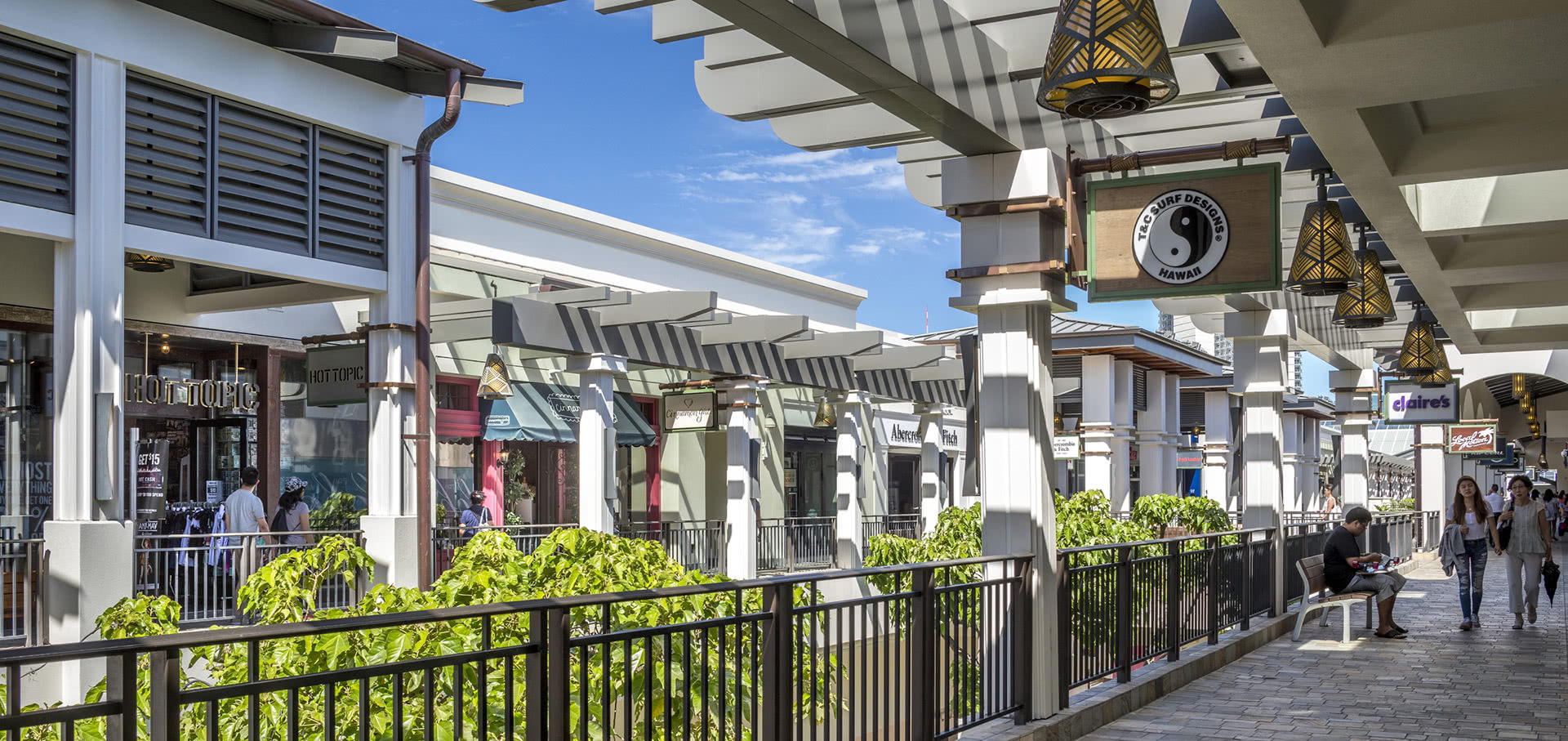
The local aspects incorporated into Ala Moana’s design sets the center apart. The center is unique in that it seamlessly blends upscale, luxury shopping with everyday shopping needs. With much of Waikiki catering to tourists with high-end luxury boutiques, Ala Moana seeks to accommodate those who live and work in the area by including products and services needed on a daily basis. In addition to local favorites Foodland Super Market and Long’s Drugs, there is a post office, a police station, bank, a dry-cleaner, over 90 dining options and even a satellite office of Honolulu City Hall. CRTKL is also wrapping up the long-awaited Target, which will open in the original Nordstrom location this October.
But these stores and services aren’t Ala Moana’s only highlights. An abundance of entertainment options can be enjoyed on the 700-SF Centerstage including live music, a daily hula show dance performance and fashion shows promoting local and worldwide couture. Additionally, the center hosts a farmers market each Sunday where shoppers will find island fresh produce, prepared foods and local crafts.
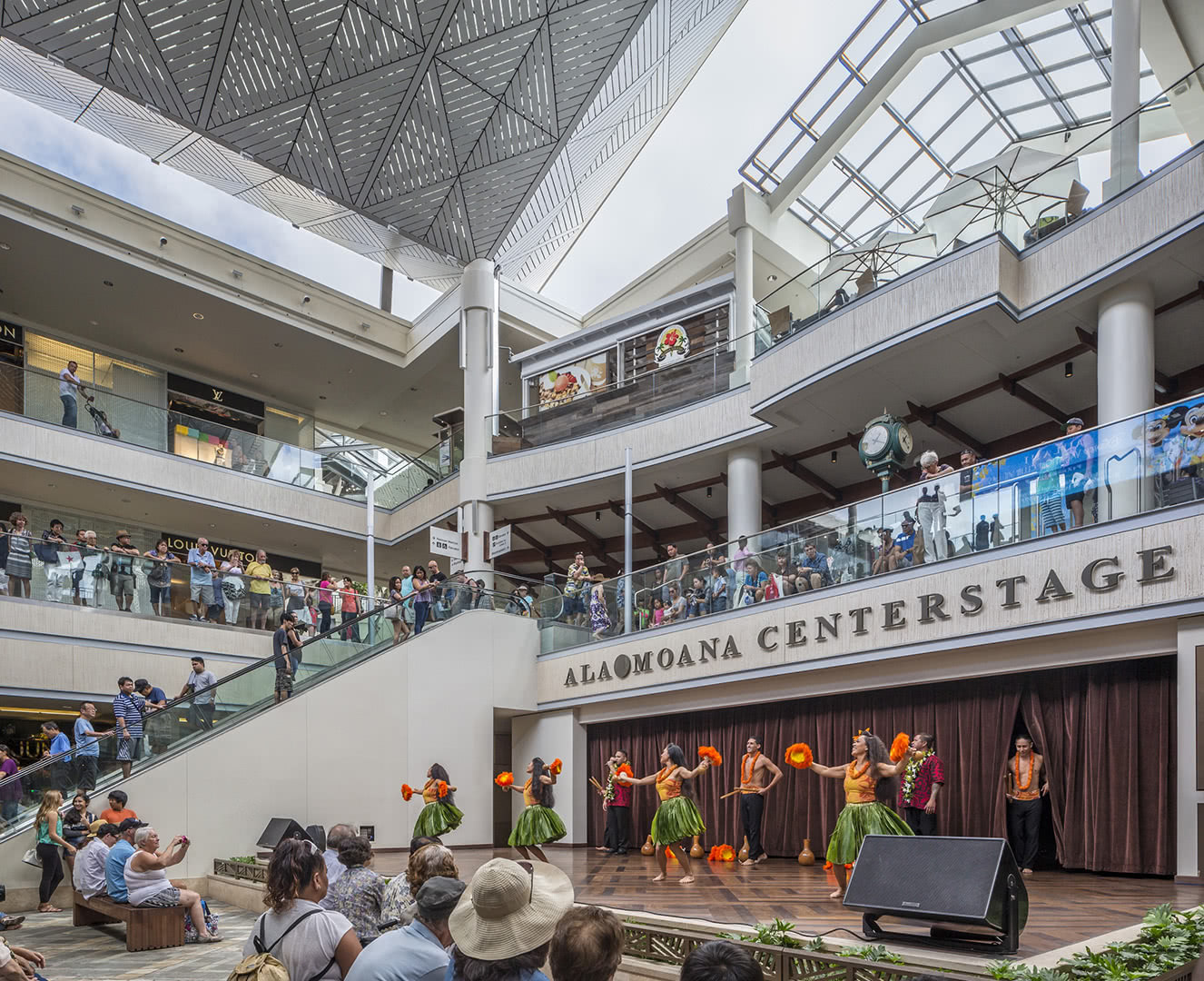
Ala Moana also holds a multi-million dollar art collection that highlights Hawaiian culture. The center’s existing art program doubled in size in 2016 when the Ewa Wing Expansion was opened. The addition of four art installations—two sculptures and two mosaics—completed the Ala Moana Art Walk.
When CRTKL was selected to lead the expansion and renovation of the Ewa Wing Expansion—a multi-million-dollar, 650,000-SF project—one of the many goals for the project was to improve the shopping experience for both tourists and local customers. The expansion added a Bloomingdale’s, a new location for Nordstrom, additional retail space and 5 levels of parking. All of these new spaces are connected to the existing mall by Center Court. The open air, park-like connection provides visitors with an area to relax and enjoy the artwork and landscape features within Center Court.
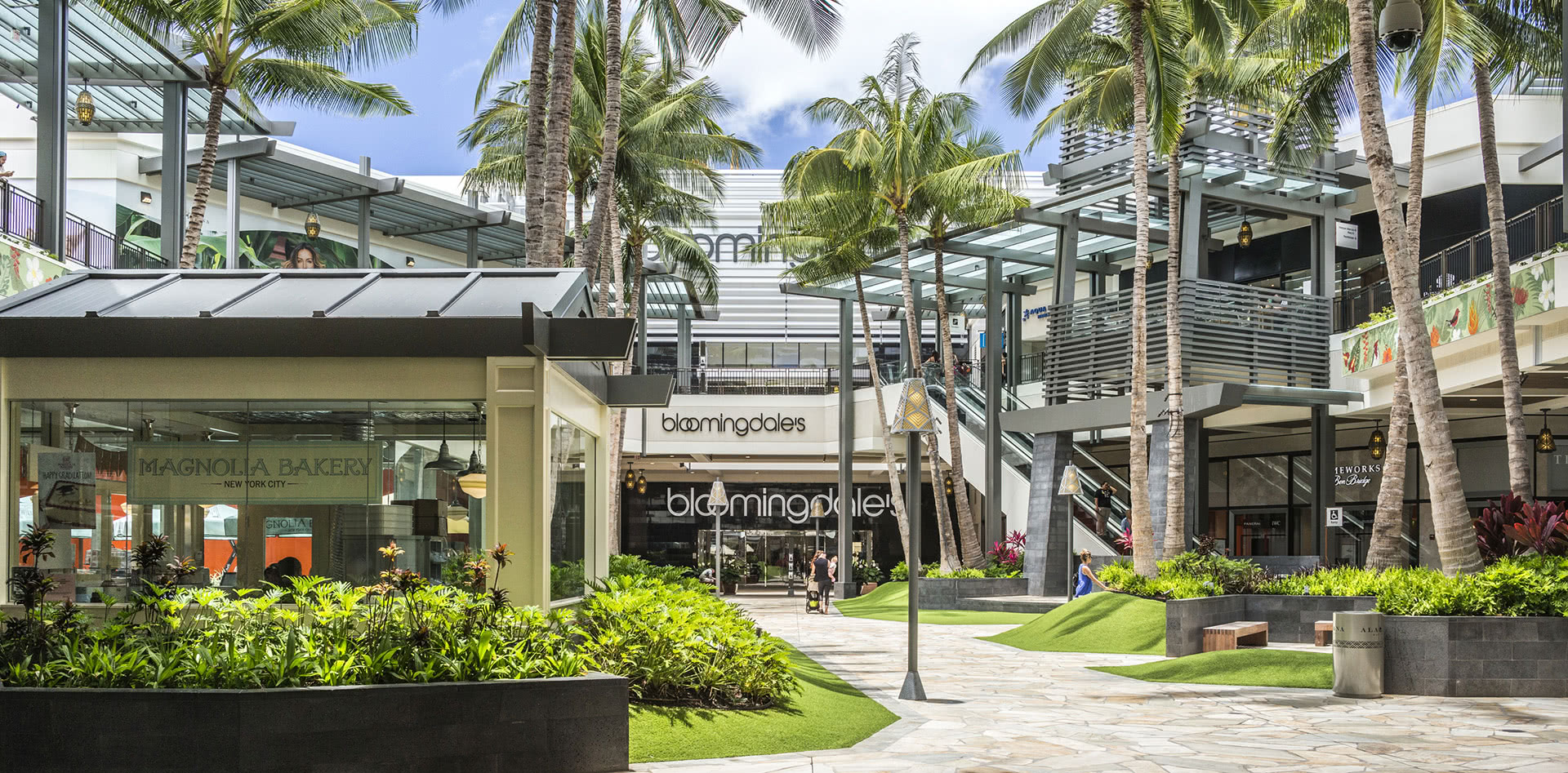
Fronting Center Court is Hawaii’s only Bloomingdale’s, completed by CRTKL in 2015. The retailer wanted to reflect the Island’s heritage while remaining quintessentially New York. A sense of tropical elegance is featured throughout the store, highlighted in details that are locally relevant. Palm frond patterns were custom designed for use on wall coverings, frosted glass, mosaic tile, carpet and upholstery. Wood beams and louvered shutters, common architectural features found in homes and public spaces in Hawaii, reinforce a regional aesthetic.
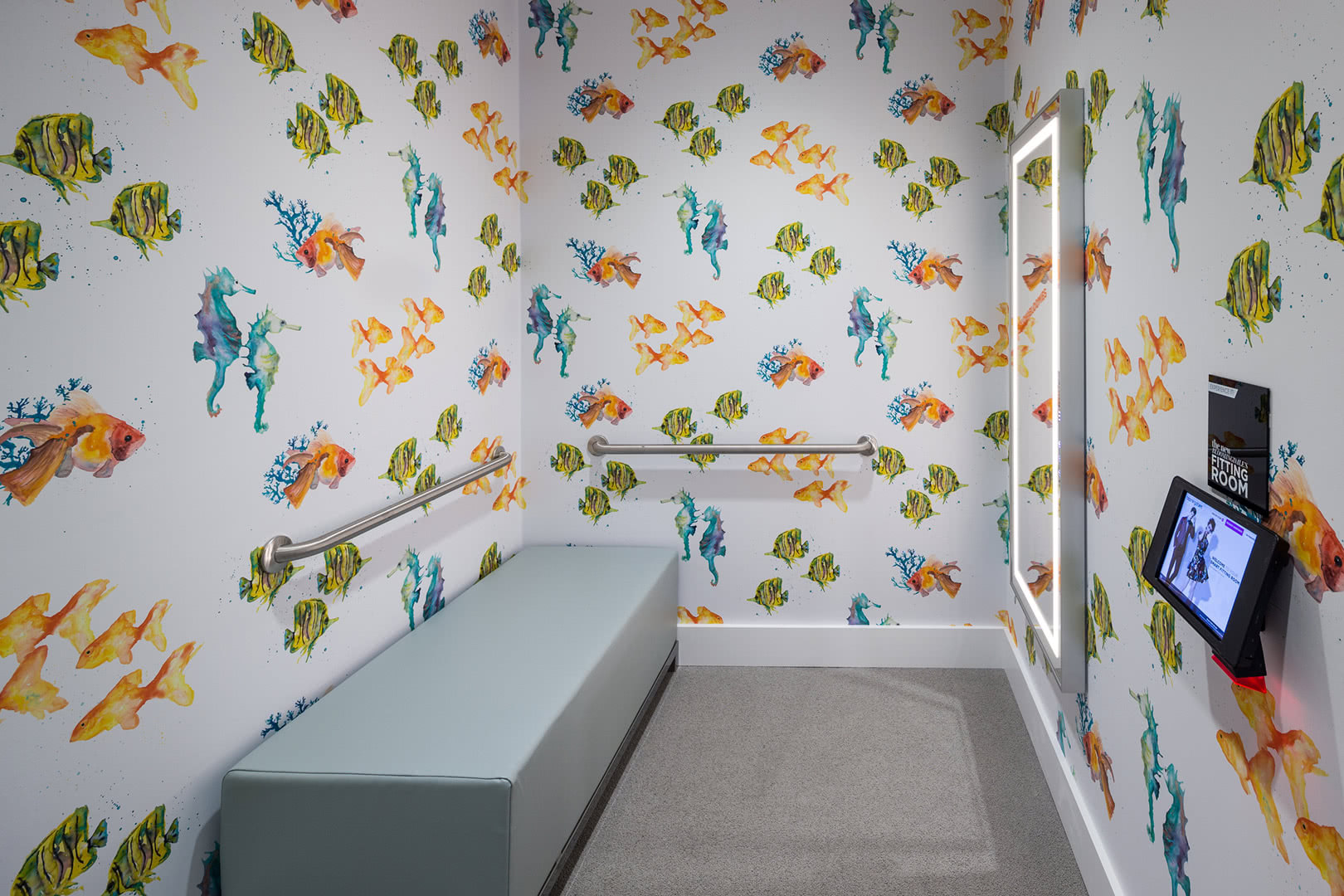
Throughout Ala Moana Center, whether it be in a department store, on the Art Walk, shopping at the supermarket or enjoying live music, there is a sense of local relevance that tourists appreciate and that makes locals beam with pride.
Ala Moana Center has experimented with different types of retailers and unique entertainment options and has evolved with time to become everyone’s shopping center. One of the biggest takeaways from this project is that designers can no longer think of shopping centers as only catering to luxury shoppers. By designing for multiple users, designers and architects are able to create exciting new opportunities for the future of retail. Ala Moana’s functional, fresh mix of retail offerings allows it to cater to a wide variety of customers, even in this turbulent time for shopping centers.
